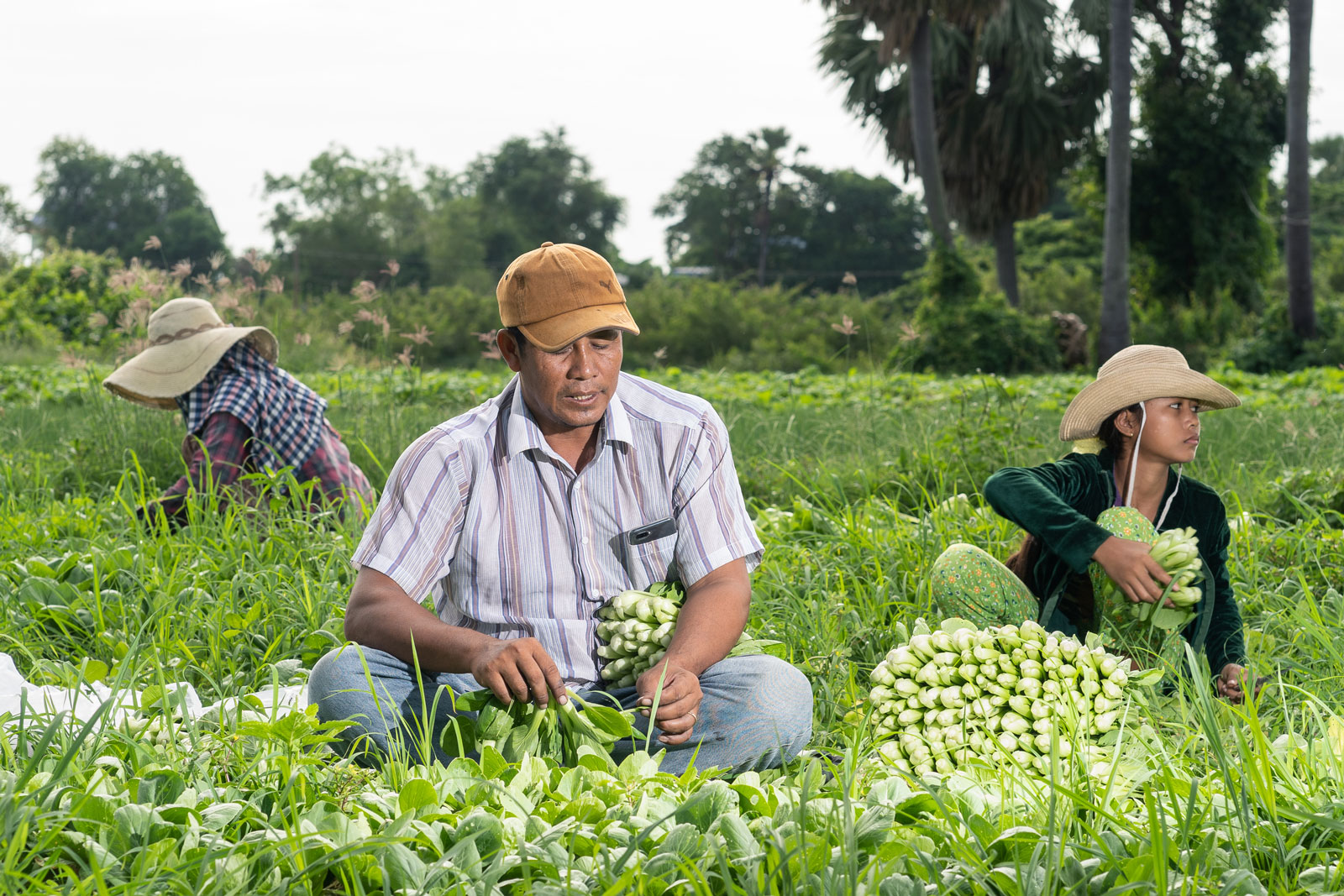This is the second of our five-part series, Cambodia in Quarantine, investigating the impact of the global pandemic on the four pillars of the Kingdom’s economy – garments, agriculture, construction and tourism. A pillar will be published each day on our website, while paying Globe members will receive early access to the full report in a special e-magazine. Sign up now to get all the stories today and support independent journalism from across Southeast Asia.
Additional reporting by Kong Meta
Despite decades now of rapid industrialisation, Cambodia is still largely a rural, agrarian nation of hamlets and dirt roads, rice paddies and lotus fields.
About 40% of Cambodians are engaged in agriculture as their main occupation, and Phat Sokha is one of them. The farmer is a commercial grower, a smallholder in Kandal province who makes his living from the land south of Phnom Penh.
The work isn’t easy, but, as the rest of the economy falls into sharp decline due to the Covid-19 pandemic, Sokha is doing relatively well for himself.
“Before, I would sell directly to the market,” he said, bundling leafy clusters of bok choy. While pandemic conditions have thrown prices into flux, Sokha has found himself in a rare island of stability – as a member of a farming co-op, his prices and buyers were locked in pre-pandemic. “This is less risky, since I already have the price, we can just focus on growing.”
Such guarantees are rare in the world of farming, where a livelihood can make or break on increasingly fickle weather patterns. Last year, drought conditions across the Mekong region caused rice crops to fail and harvest to decline, putting farmers in a bind across Thailand and Cambodia.
This year, however, is a fairly good one to be a farmer – or, at least, a good one to have some land to return to when livelihoods elsewhere have failed.
The Covid-19 pandemic has effectively levelled much of the Cambodian economy, wreaking havoc on garments, construction and especially tourism. But agriculture – perhaps Cambodia’s most consistent economic sector, yet increasingly marginal in the country’s runaway GDP growth – also seems to be the least dramatically affected by the severe disruption seen elsewhere.
Indeed, by some metrics, the industry is looking relatively sunny.
Song Saran, CEO of exporter Amru Rice and current president of the 200-member-plus Cambodia Rice Federation industry group, said pandemic conditions had actually boosted demand for the Kingdom’s rice, particularly its fragrant varieties.
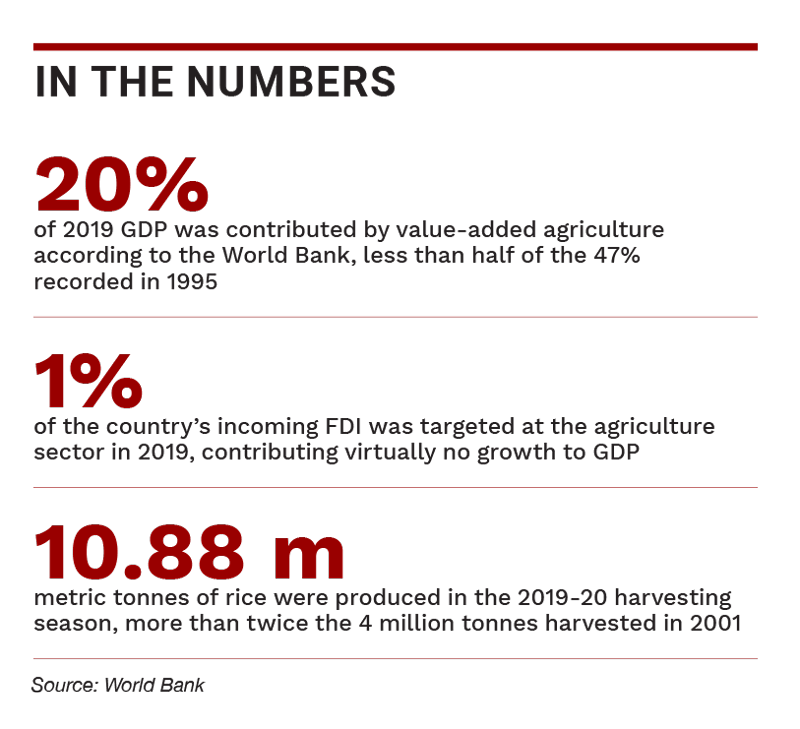
Shipments of long-grain rice have been up 50% over the past seven months thanks in part to panic buying and stockpiling, both on an individual and large-scale level.
“Rice has played an important role in the pandemic, but we’re thinking beyond that,” Saran said, describing the expansion as an opportunity to promote new technologies and crop diversification schemes among the nation’s farmers. “After Covid-19, we don’t want to keep pushing rice.”
Part of that is because the strong demand has collided with shortages in supply – not due to anything pandemic-related, but to domestic productivity and logistics issues. More ominously, Saran said the biggest knock to supply has come from the effects of climate change, which have parched the Mekong region and forced rice farmers to break traditional time-tables of planting and harvesting based on seasonal rains.
Amru is drawing from its own stockpile built up in January to send product abroad. With crops failing earlier this year and needing to be replanted, Saran says the next harvest, expected this fall, could see typically alternating crops of wet- and dry-cultivated rice coming due at the same time. That’s an abnormal outcome that could add further headache to farmers trying to recoup on an already difficult year.
“The drought has been tough,” Saran said, “farmers have been forced to make choices to save their harvest, which has meant deciding when and how to replant.”
Rice is the dominant crop in Cambodia, but agriculture is also typically categorised to include forestry and fish products. Historically, this broad category has been the dominant sector in Cambodia’s economy and, at least in terms of employment, continues to hold sway over some 40% of the national labour force. But as the country has industrialised, the agricultural sector has dwindled in its contributions to the cash economy.
Household agriculture, traditionally the main driver of poverty reduction in Cambodia, was edged out of that role by wage labour in about 2013.
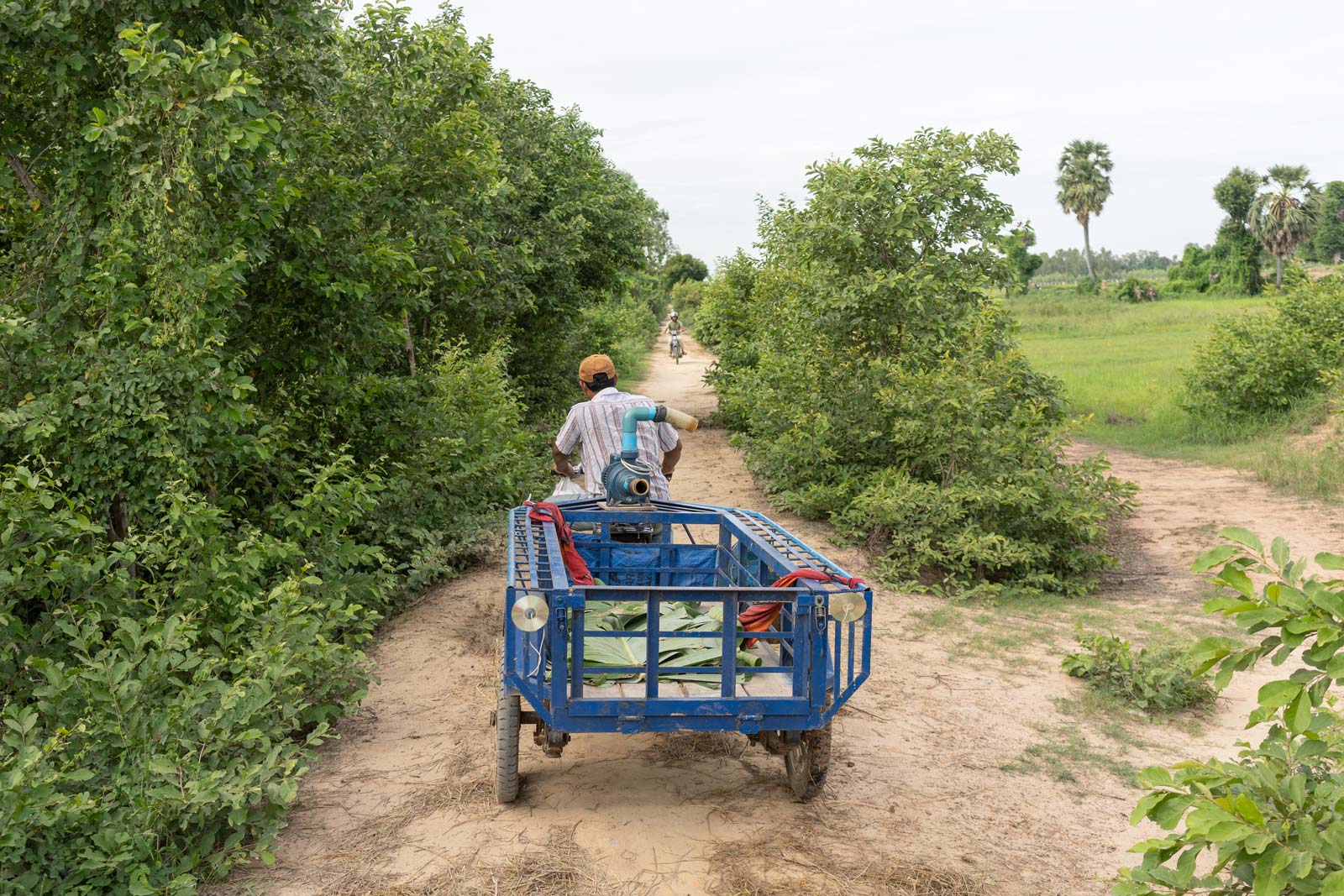
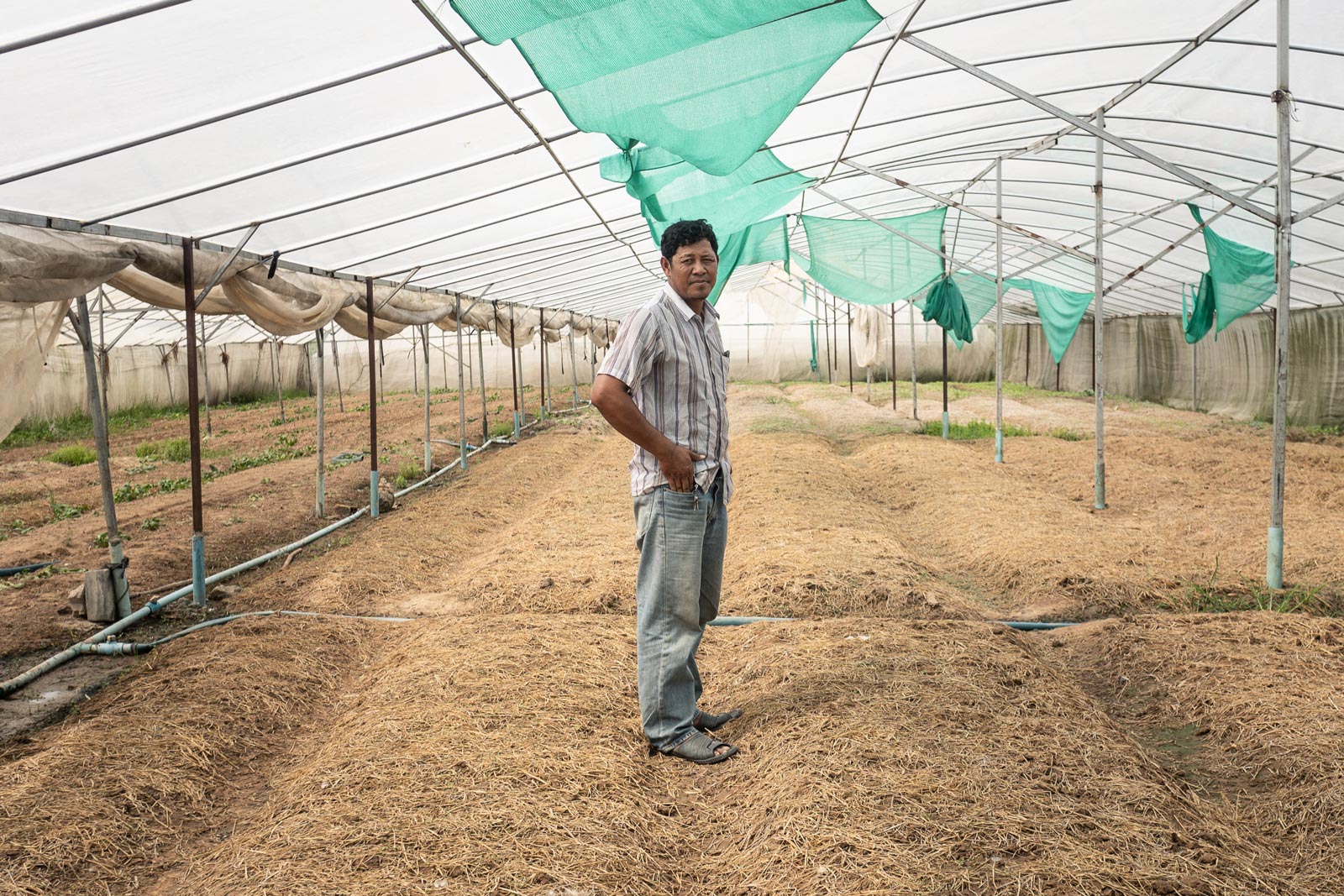
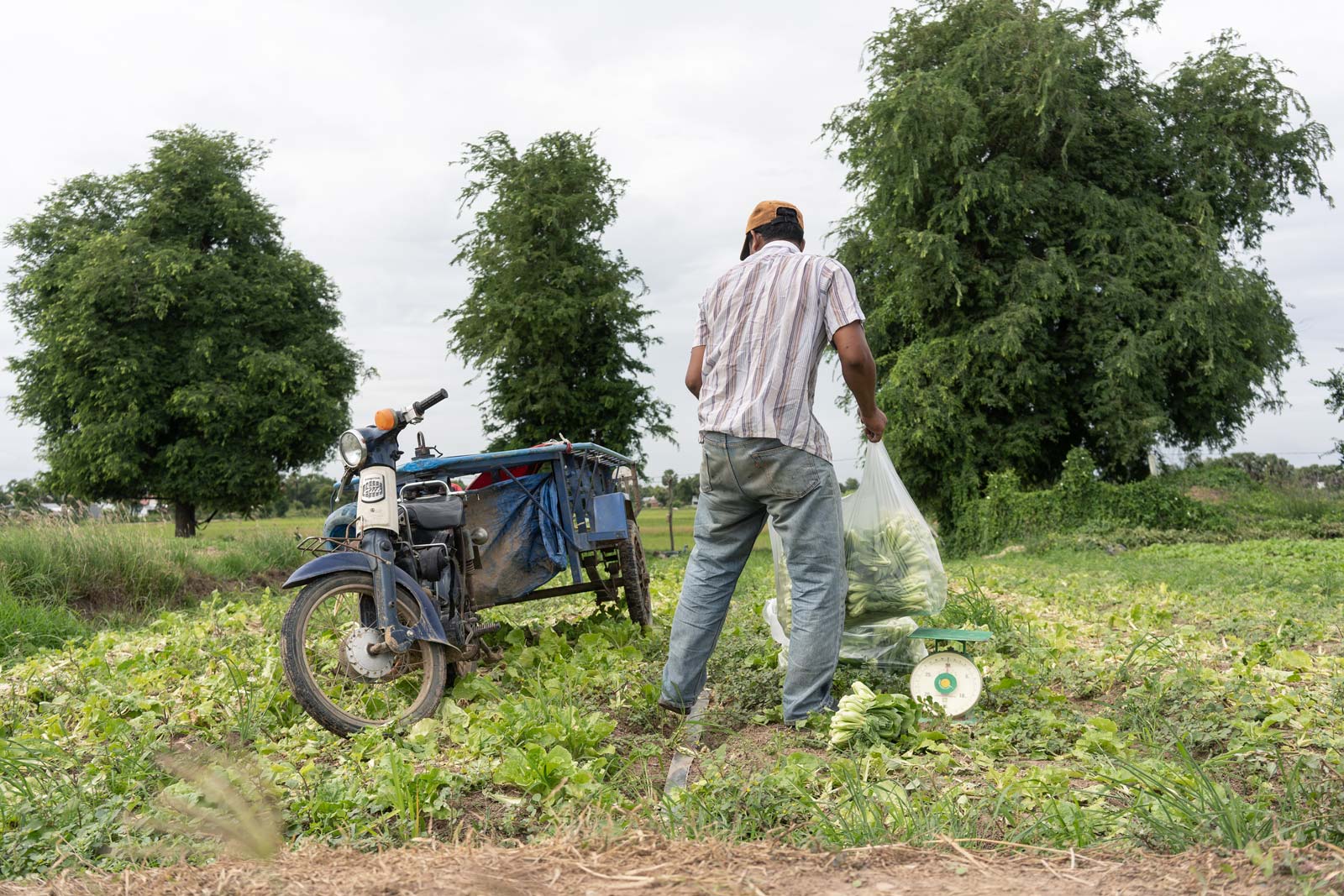
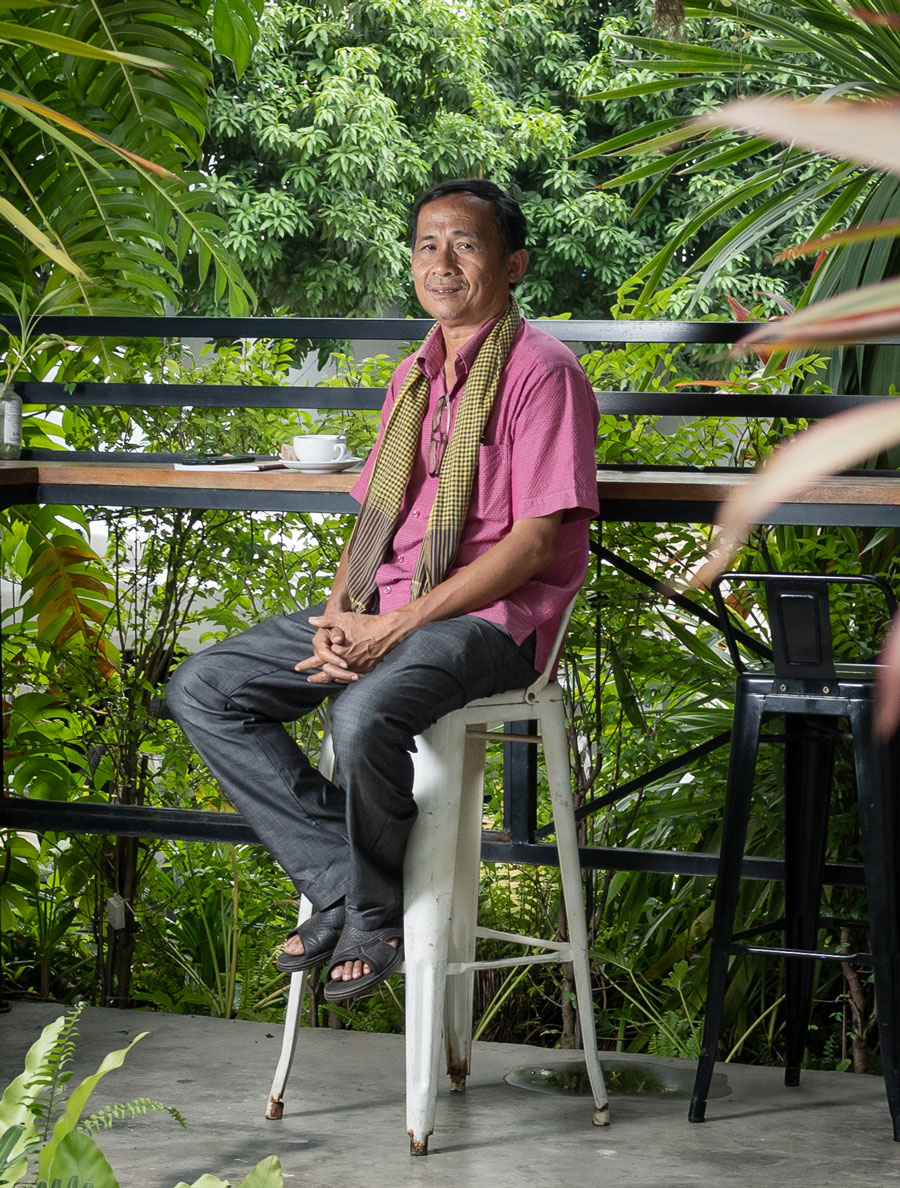
We’re pushing people at the local level to raise animals, grow vegetables, raise fish
H.E Hean Vanhan, Ministry of Agriculture, Forestry and Fisheries
In 1995, when the Khmer Rouge holdouts still held territory in Pailin province, value-added agriculture represented about 47% of the country’s total GDP. By last year, after two decades of investment in manufacturing, construction, tourism and assorted services, that share had dropped to just over 20%, even while overall production has increased.
According to the World Bank, last year the combined economic value of Cambodia’s agricultural products was about $5.6 billion, up by a little more than $4 billion from 1995. The increase was driven in large part by an increase in the amount of cultivated land, as, by and large, modern agricultural techniques and technology remain underutilised in much of the Kingdom.
As production and harvest yields have increased, the actual economic growth sourced from agriculture has declined in relation to other sectors. The industry, which includes forestry and fish farming, received just 1% of incoming foreign direct investment (FDI) last year, the remainder of which went to the more dynamic industries like construction.
Still, at the present moment when these little dynamos have been left to spin out their energy in a recessed global economy, agriculture has provided a sort of makeshift safety net for people who have found their wage hours slashed by the downturn.
H.E Hean Vanhan, secretary of state for the Ministry of Agriculture, Forestry and Fisheries, told the Globe the ministry had issued an official set of recommendations in part urging the public to step up production however they can.
“We’re pushing people at the local level to raise animals, grow vegetables, raise fish,” Vanhan said when describing his ministry’s approach to the Covid-19 landscape. “It doesn’t matter if it’s formal or informal.”
The push to return to the land has echoed down from other high places as the economy has ground down. Prime Minister Hun Sen has, repeatedly in recent months, urged Cambodians to use the country’s agrarian background to eke out a living. In a speech in Prey Veang province’s Freshwater Aquaculture Research and Development Center, the prime minister touted the sector as a way forward through the downturn.
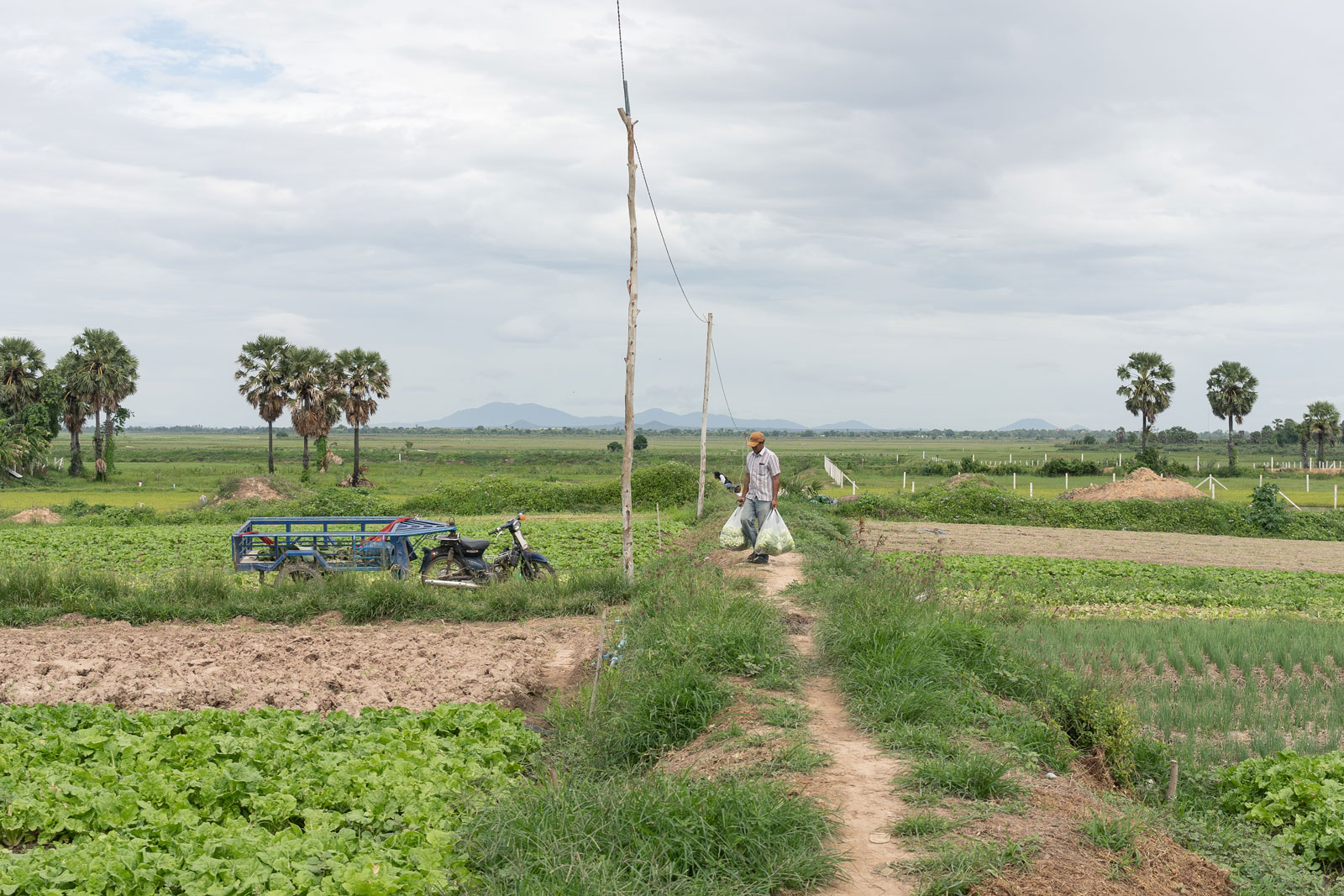
“We have to remember that we are an agricultural country,” Hun Sen said, according to the Voice of Democracy media outlet. “[Covid-19] is not only not hurting [Cambodia] but it also allows us to dominate in the agricultural sector. That is why the government has quickly changed direction to push for [financial support in] the agricultural sector at large.”
The agricultural sector is largely untaxed in Cambodia, part of a political calculation by the prime minister to maintain rural support. The World Bank cautioned in its May report that the industry here, already labour-dependant, is unlikely to be able to absorb the excess manpower now laid off in other industries, as well as returning migrant workers leaving jobs in Thailand.
About a week after his comments in Prey Veang, Hun Sen announced the purchase of 2,000 rice seeding machines from Phnom Penh engineering and consultancy firm AgriSmart, while proposing that laid-off workers from other industries could return to their home provinces and, with government stipends in hand, go to work in the fields.
“They supply the agriculture sector with more workers,” he said of these workers. “We have jobs for them to do in the field of agriculture.”
In tourist-reliant Siem Reap, the Globe spoke with several workers who saw agriculture not as an economic opportunity but as a last-ditch safety net to keep food on the table. This activity has ranged from home-made frog ponds to plans to join relatives in the countryside to help raise vegetables and other animals.
When Sean Sreymom lost her job at a local non-governmental organisation, she and her family looked to the land while cutting costs at home.
“This is my Covid garden,” Sreymom said with a smile, showing off the cultivated strip between the side-by-side houses owned by members of her family. With more time at home, this kind of micro-scale planting has been an attractive option for those like Sreymom with a budget to keep and hours to fill.
She says her brother, who lives outside the city and has more land, is also growing produce to defray the family budget. When her own little garden is ready for harvest, she hopes to make some extra money by selling the assorted vegetables.
“It’s not much, but it’s a good hobby, anyway,” Sreymom said.
Even before the pandemic cut the legs out from the global marketplace, Cambodian agriculture tended to subsistence, not a commercialised industry.
There exists a range of statistics on the number of subsistence growers in the country. Some estimates from international development groups such as the UN Development Programme suggest about 73% of the Kingdom’s farms operate on a subsistence basis, while Vanhan from the MAFF believes the number is closer to 40%, more in line with the general ratio of farmers in the population overall.
With most of these farmers focused mainly on rice cultivation, the subsistence model still isn’t enough to meet just Cambodia’s needs. The US Mission in the country estimates only about 70% of the country’s fruit and vegetable demand is met by in-country producers, leaving the rest to imports from Vietnam and Thailand.
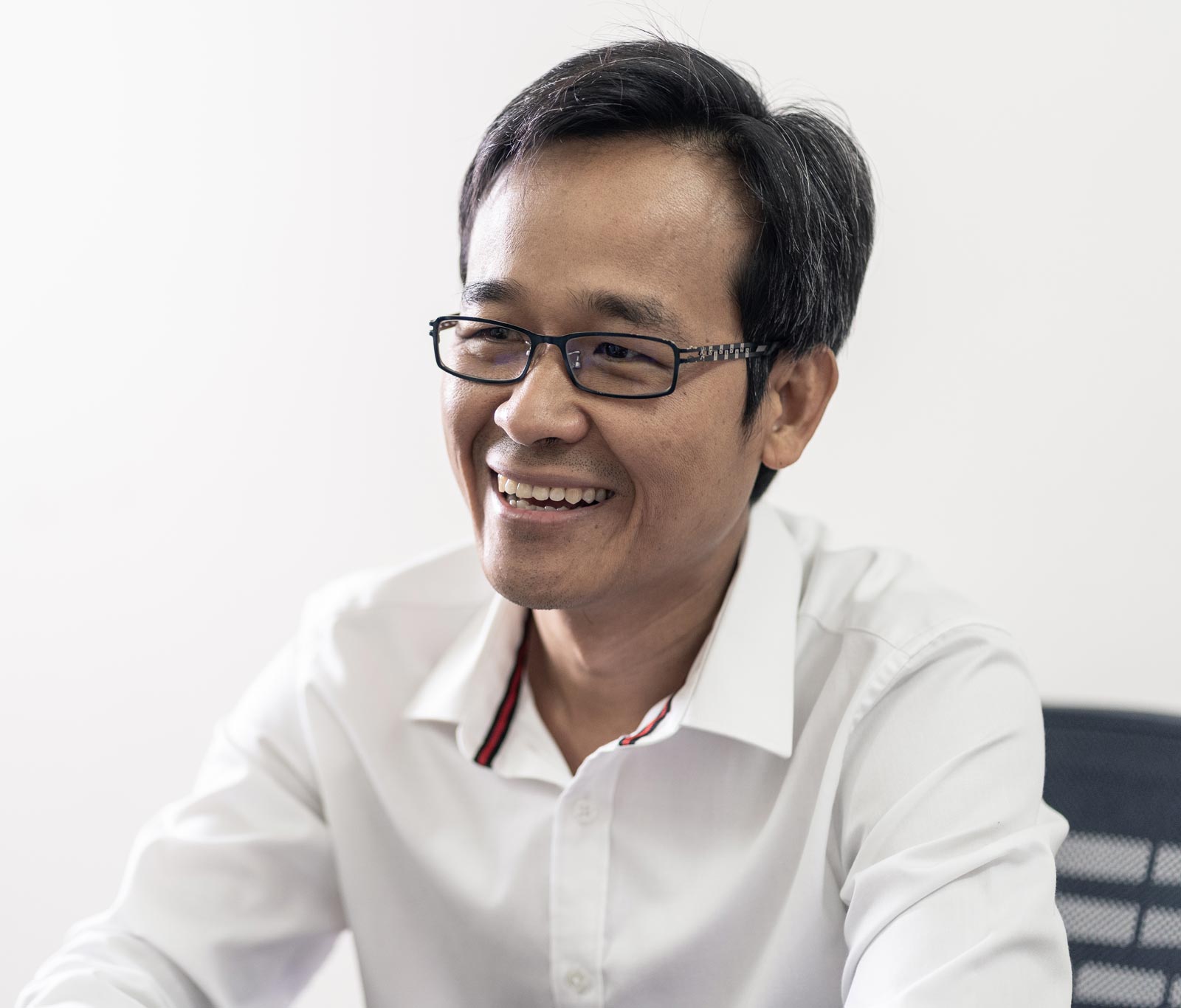
Regardless of the exact number of subsistence farmers, says agronomist and Grass Roots Democracy party chairman Yang Saing Koma, the proportion of farmers growing only to feed themselves is too high, especially when considering official goals of expanding the sector’s employment potential and regional competitiveness.
“If we continue like that [subsistence farming], I don’t know where we’ll end up,” Koma said. “Maybe just continue buying cheap things from Vietnam. They’ve already gone to more high-value crops and more advanced industry, they’re very advanced and we’re still struggling, running behind.”
Koma’s agrarian background has translated into his political vision, and now he speaks frequently to the possibility of state guidance to push productivity into more effective cultivation and higher-value crops. To that effect, he promotes an emphasis on “transforming” subsistence farms to commercialised outfits, thus making entrepreneurs out of smallholders and building an industry that provides paid work to more farmers, who might today make their actual money driving tuk-tuks or labouring in construction.
Agriculture hasn’t been affected directly but a lot of rural families and communities have been affected
Kaushik Barua, International Fund For Agricultural Development
He’s not alone in that goal.
Kaushik Barua is the country manager for the International Fund For Agricultural Development, a United Nations agency that works with national governments to drive smallholder development programmes.
“We have seen there was a period of growth in agriculture [in Cambodia] reliant on an increase in inputs, in labour and land, but the next stage needs to be based on skills and production,” Barua said.
The office’s mid- to long-term programmatic work in Cambodia hasn’t lost its original focus during the economic downturn and, while Barua said there might even be opportunities for local growers during periods of disruption to globalised supply lines, farmers have still been left vulnerable to the loss of cash labour.
“From our reports, the shocks have gone elsewhere,” Barua said. “Agriculture hasn’t been affected directly but a lot of rural families and communities have been affected.”
The Globe has also looked at the current situation for communities living on the Tonle Sap as an additional piece of reporting for this story, the piece can be read here. Next the Globe will be looking at the impact of the pandemic on Cambodia’s construction and finance sectors.
